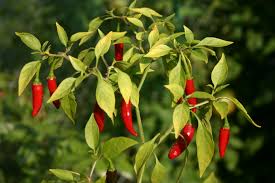How to Grow Birds Eye Chilli at Home
Introduction Birds Eye Chilli a fiery and flavorful pepper, is a fantastic addition to any home garden. Known for its pungent heat and rich aroma, this chilli variety thrives in various climates and requires minimal maintenance. Growing Birds Eye Chilli at home is a rewarding experience, offering fresh and organic peppers for culinary use. In this guide, we will explore the step-by-step process to cultivate Birds_Eye Chilli successfully.
Choosing the Right Seeds,
Selecting high-quality seeds is the foundation for growing healthy Birds Eye Chilli plants. Look for organic, non-GMO seeds from a reputable supplier. You can also harvest seeds from ripe Birds Eye_Chilli pods, ensuring they are dried properly before planting.
Optimal Growing Conditions
Birds Eye Chilli thrives in warm and humid conditions. The ideal temperature for germination ranges between 25-30°C. Ensure your planting location receives at least 6-8 hours of direct sunlight daily. This chilli plant grows well in well-draining, loamy soil with a pH between 5.5 and 7.0.
Planting the Seeds
To start the growing process, plant the Birds Eye_Chilli seeds in seed trays or small pots filled with nutrient-rich potting mix. Sow the seeds about 0.5 cm deep and lightly cover them with soil. Water gently and place the pots in a warm, sunny spot. Germination typically takes 7-14 days.
Transplanting the Seedlings
Once the seedlings have developed 3-4 true leaves, they are ready for transplanting. Choose a larger pot or a garden bed with well-draining soil. Space the plants about 30 cm apart to allow adequate air circulation and root development. Water the plants thoroughly after transplanting to help them establish quickly.
Watering Requirements
Birds Eye Chilli plants need consistent watering but should not be overwatered. Ensure the soil remains moist but not soggy. Water the plants early in the morning or late in the afternoon to prevent evaporation. Using a drip irrigation system or a watering can with a narrow spout can help direct water to the roots without wetting the foliage excessively.
Fertilization and Nutrients
For robust growth, feed your Birds Eye_Chilli plants with a balanced organic fertilizer rich in nitrogen, phosphorus, and potassium. During the flowering stage, reduce nitrogen intake and increase potassium to encourage fruit production. Using compost, bone meal, and fish emulsion can enhance soil fertility naturally.
Pruning and Maintenance
Regular pruning helps maintain a healthy Birds Eye Chilli plant. Remove any yellowing leaves, dead branches, or weak shoots to promote better air circulation. Pinching the tips of young plants encourages bushier growth and increased fruit production.
Pest and Disease Management
Birds Eye Chilli plants are relatively resistant to pests and diseases. However, common issues such as aphids, spider mites, and whiteflies may occur. Use organic insecticides like neem oil or introduce beneficial insects like ladybugs to control pest populations. Ensure proper spacing and avoid overwatering to prevent fungal diseases such as powdery mildew and root rot.
Supporting the Plants
As Birds Eye_Chilli plants grow, they may require support to prevent branches from breaking under the weight of the fruits. Use small stakes or cages to provide stability, especially in windy conditions.
Flowering and Pollination
Birds Eye Chilli plants produce small white flowers before forming fruits. While they are self-pollinating, natural pollinators like bees can enhance fruit set. If growing indoors, gently shake the plant or use a soft brush to transfer pollen between flowers.
Harvesting Birds Eye Chilli
Birds Eye_Chilli is ready for harvest approximately 75-90 days after planting. The pods start green and gradually turn red as they mature. You can pick them at any stage based on your preference. Use scissors or pruning shears to harvest the chillies without damaging the plant.
Storing and Preserving Chillies
To store fresh Birds Eye Chilli, keep them in an airtight container in the refrigerator for up to two weeks. For long-term preservation, dry the chillies in the sun or use a dehydrator. Once dried, store them in an airtight jar or grind them into powder for seasoning.
Growing Birds Eye Chilli Indoors If you have limited outdoor space, growing Birds Eye_Chilli indoors is a great alternative. Use pots with good drainage and place them on a sunny windowsill or under grow lights. Maintain proper humidity and temperature levels to ensure healthy growth.
Companion Planting Birds Eye Chilli benefits from companion planting with basil, tomatoes, and marigolds. These plants help deter pests and enhance soil health. Avoid planting near fennel or beans, as they may compete for nutrients.
Common Problems and Solutions
- Yellowing Leaves: This may indicate overwatering or nutrient deficiency. Adjust watering frequency and supplement with balanced fertilizer.
- Wilting Plants: Could be due to root rot or excessive heat. Ensure well-draining soil and provide adequate shade during extreme temperatures.
- No Fruit Production: Lack of pollination or excessive nitrogen can hinder fruit development. Hand-pollinate flowers and adjust fertilization accordingly.
Health Benefits of Birds Eye Chilli Birds Eye_Chilli is not only a culinary delight but also offers numerous health benefits. It contains capsaicin, which aids in metabolism, pain relief, and cardiovascular health. The chilli is also rich in vitamins A and C, which boost the immune system and promote healthy skin.
Culinary Uses of Birds Eye_Chilli This versatile chilli is used in various cuisines worldwide. It enhances the flavor of curries, soups, sauces, and stir-fries. You can also infuse it into oils or vinegar for a spicy kick. For those who love spicy food, adding Birds Eye Chilli to dishes elevates the heat and depth of flavor.
Conclusion Growing Birds Eye Chilli at home is an exciting and rewarding process. With the right care, you can enjoy a bountiful harvest of these fiery peppers. Whether grown in pots or garden beds, Birds Eye Chilli adds beauty to your space and enhances your culinary creations. By following the guidelines mentioned above, you can successfully cultivate and enjoy your very own homegrown Birds Eye Chilli.





